Moving from the “thirsty” zone
In April, the sun was pouring down on Tuy Phong fields. The winter-spring rice crop was almost finished, and farmers were busy preparing for the summer-autumn crop. If in the past, production was always in the mindset of "looking to the sky and the earth", now, people are proactive and confident in the crop thanks to stable irrigation water. In the key rice areas of Phong Phu and Phu Lac communes, the production water has begun to open, and farmers across the fields are busy plowing and preparing for the new crop. "Now there is no more looking to the sky and the earth like before, ma'am! But people should not be subjective, they must follow the agricultural sector's crop calendar to avoid risks caused by pests or erratic weather", a farmer in Phu Lac commune shared.
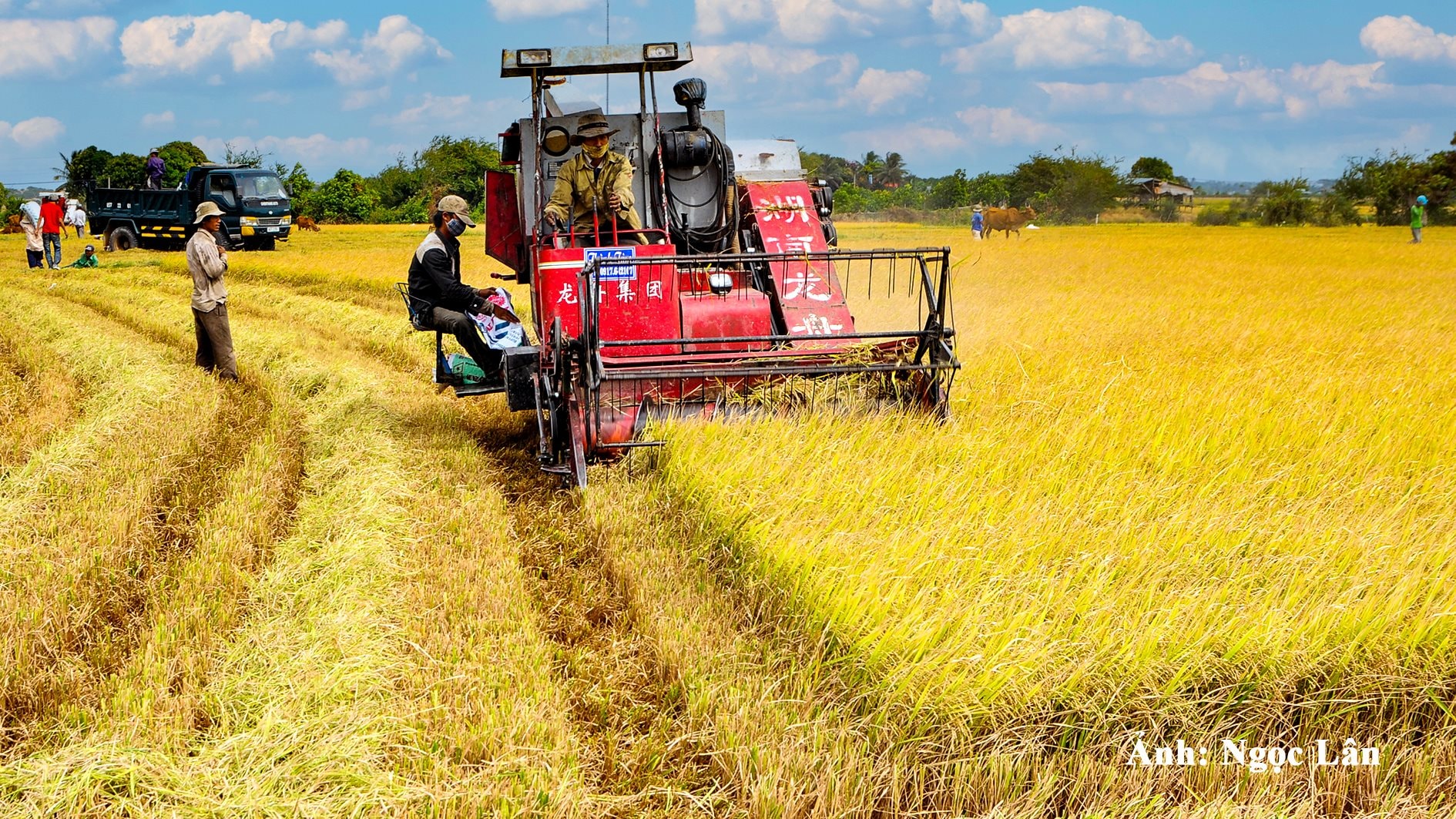
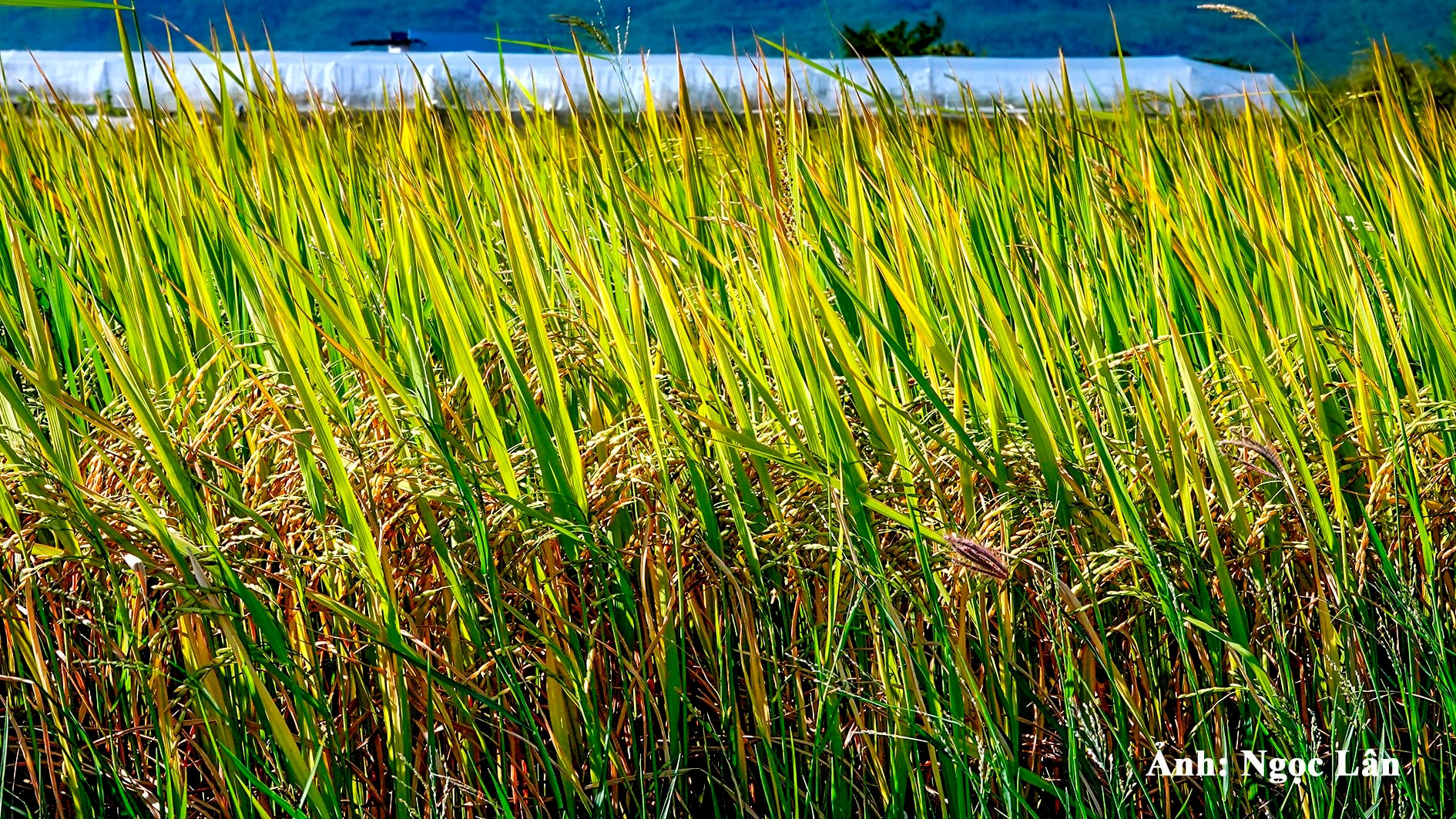
Harvesting rice in Tuy Phong. Photo: N.Lan.
The big turning point of Tuy Phong agriculture comes from the synchronous investment in the irrigation system with 3 large-scale reservoirs: Phan Dung, Long Song and Da Bac, with a total capacity of more than 55 million m³. Thanks to water, rice production areas are maintained stably, advantageous crops such as apples, grapes, vegetables, dragon fruit, drought-resistant plants... develop strongly. Raising goats, cows and sheep is suitable for local conditions, with few diseases.
According to Mr. Nhu Quoc Thich - Deputy Head of the Department of Agriculture and Environment of Tuy Phong district, in the 2024-2025 winter-spring crop, the whole district will plant 1,981 hectares of rice. Although the price of rice this year has decreased by about 1,500 VND/kg, people with lower incomes still maintain their confidence and continue to produce. In addition, apples are currently 137.3 hectares, grapes are 42.4 hectares, dragon fruit is more than 566.1 hectares and short-term vegetables remain stable.
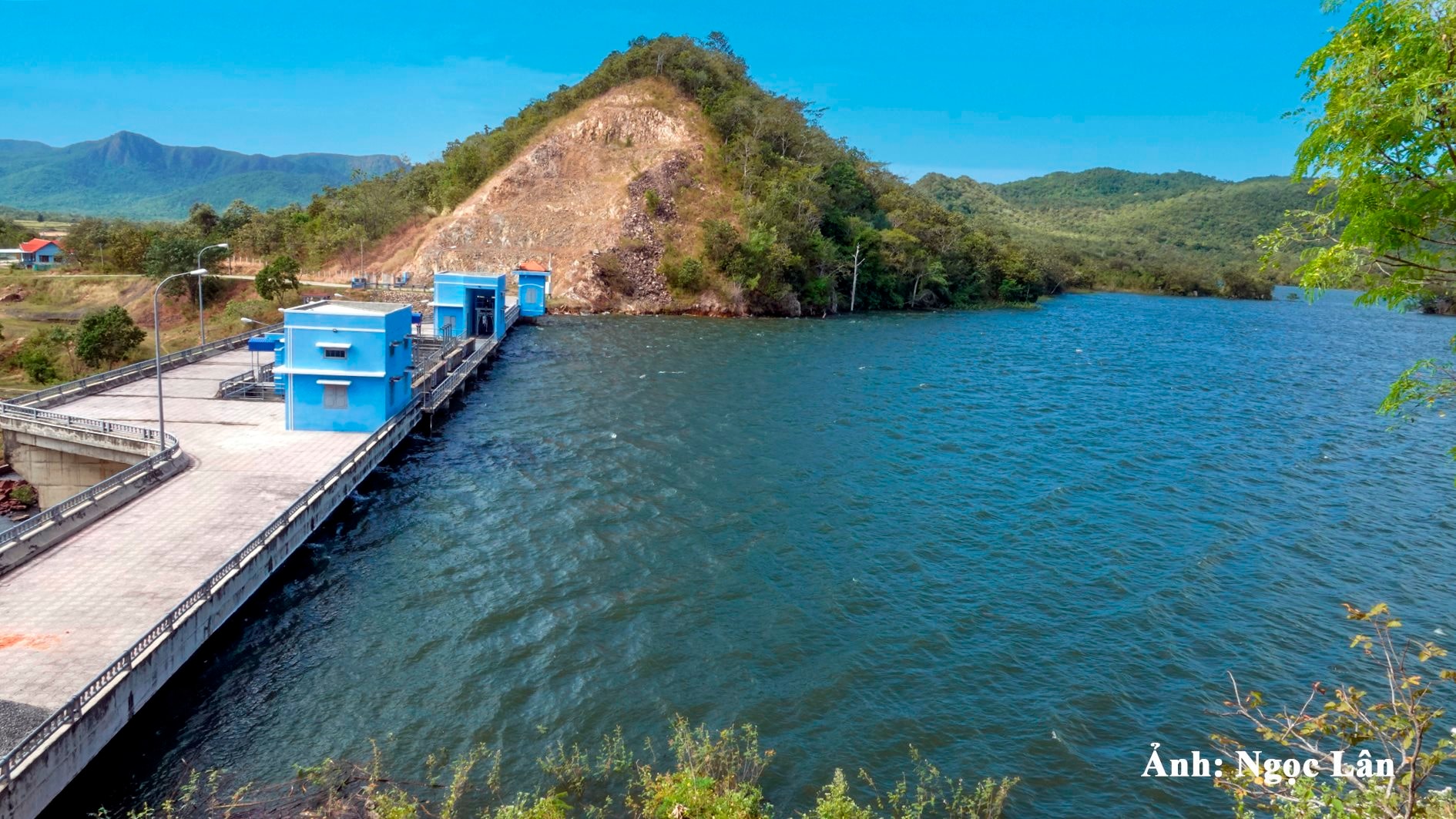
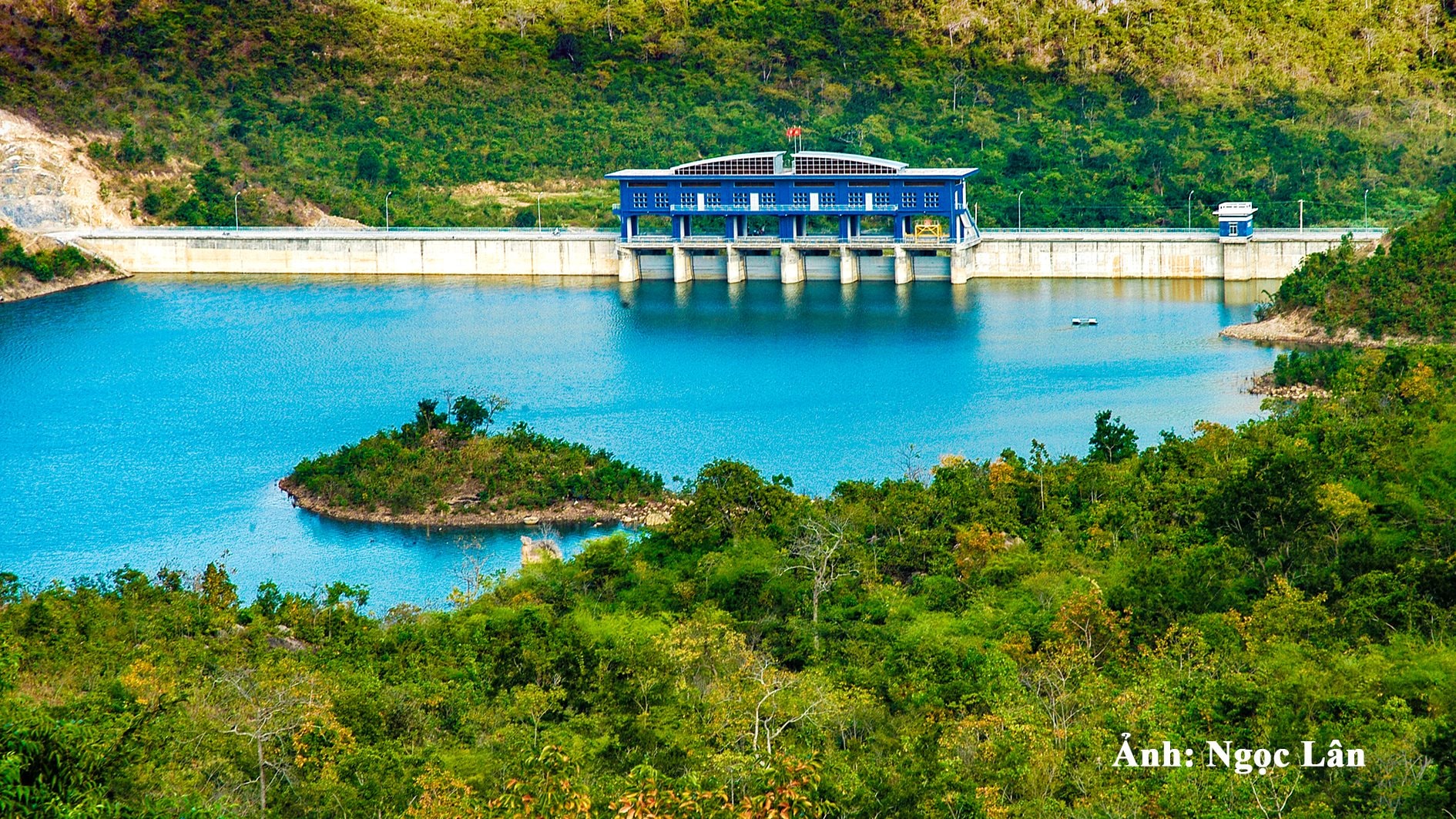


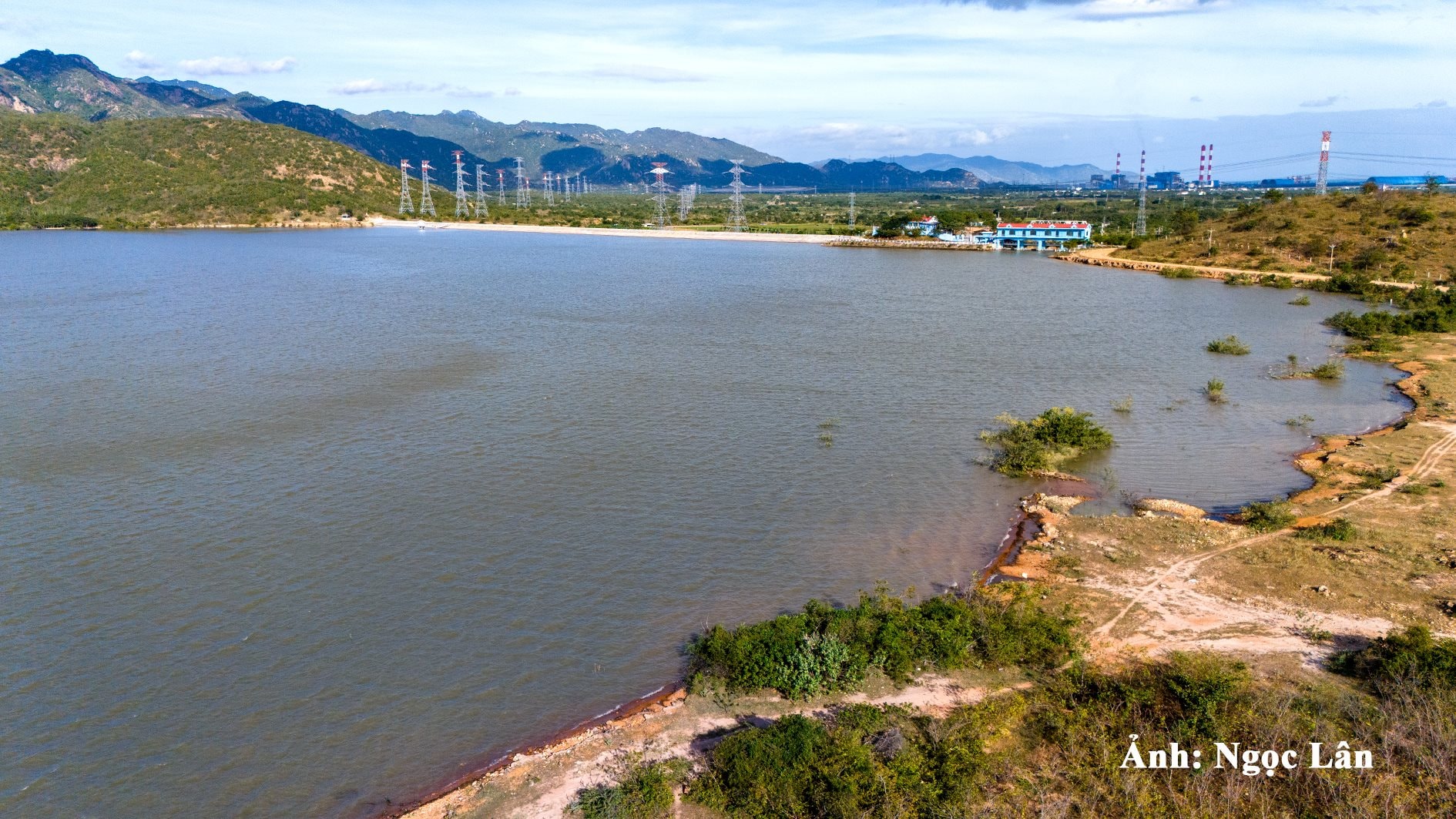
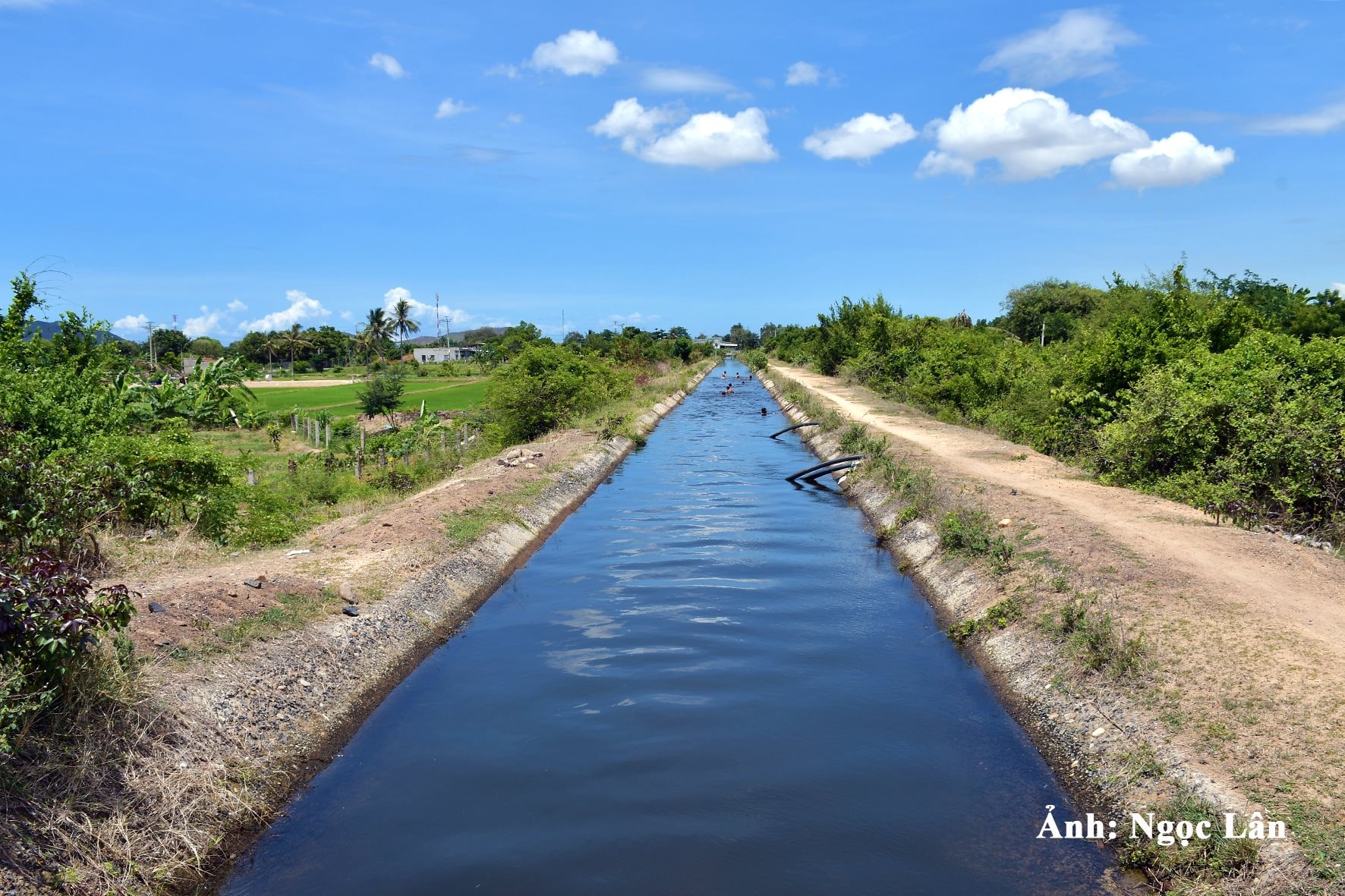
Irrigation system promotes agricultural production efficiency. Photo: Ngoc Lan.
Looking back at the time when the district was re-established, Tuy Phong agriculture was still backward, mechanization was limited, and production depended on the weather. However, with support from the Central Government, the province and local resources, the irrigation system was invested synchronously, and the intra-field canals were solidified. From 2021 to now, the district has solidified 16 intra-field canals, more than 5 km long, with a capital of more than 10 billion VND. At the same time, production thinking has also changed, farmers have gradually approached science and technology. If in 1983, food output only reached more than 2,100 tons, by 2024 it had skyrocketed to more than 41,200 tons, with a stable rice yield of 2-3 crops/year.
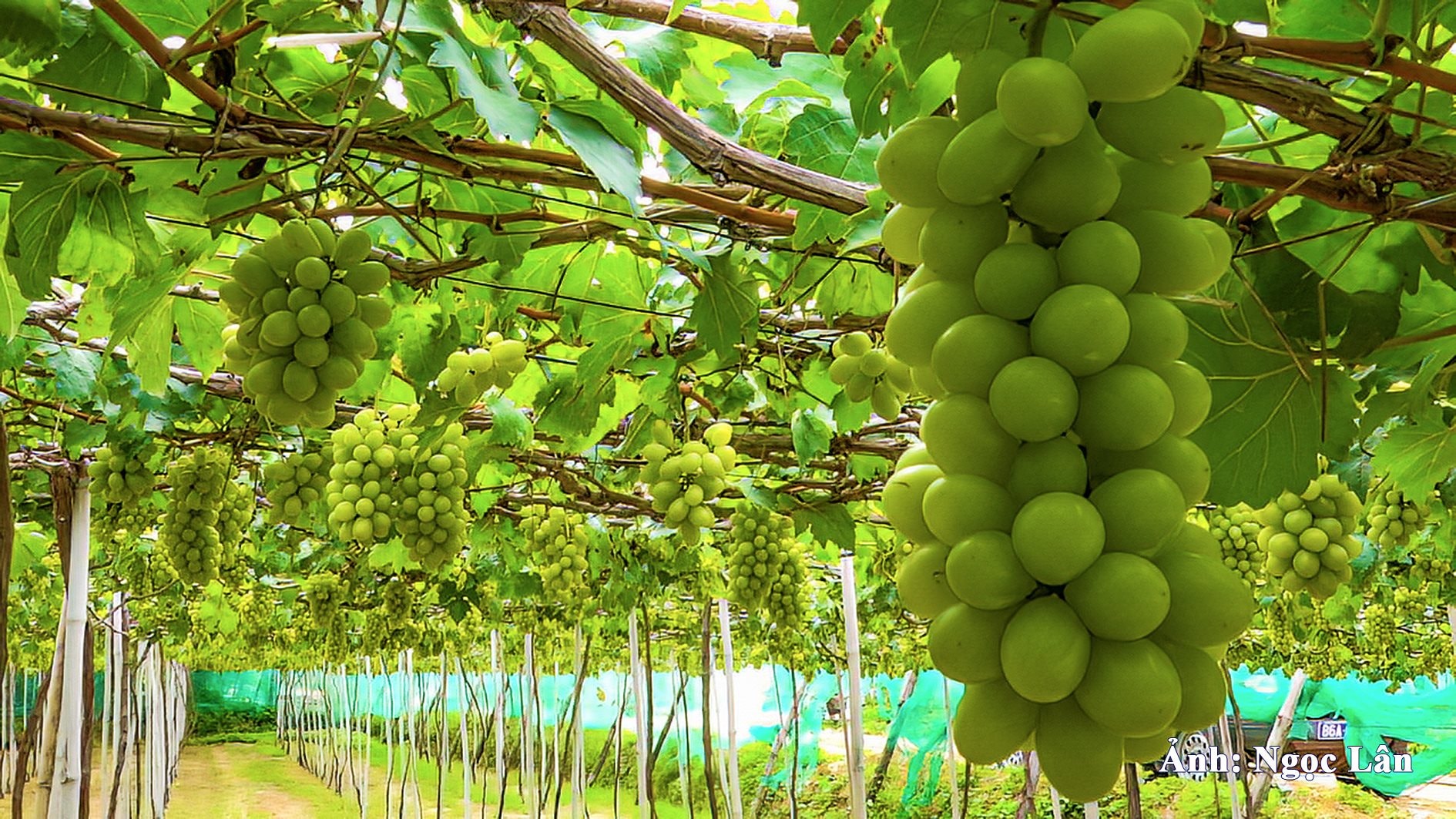
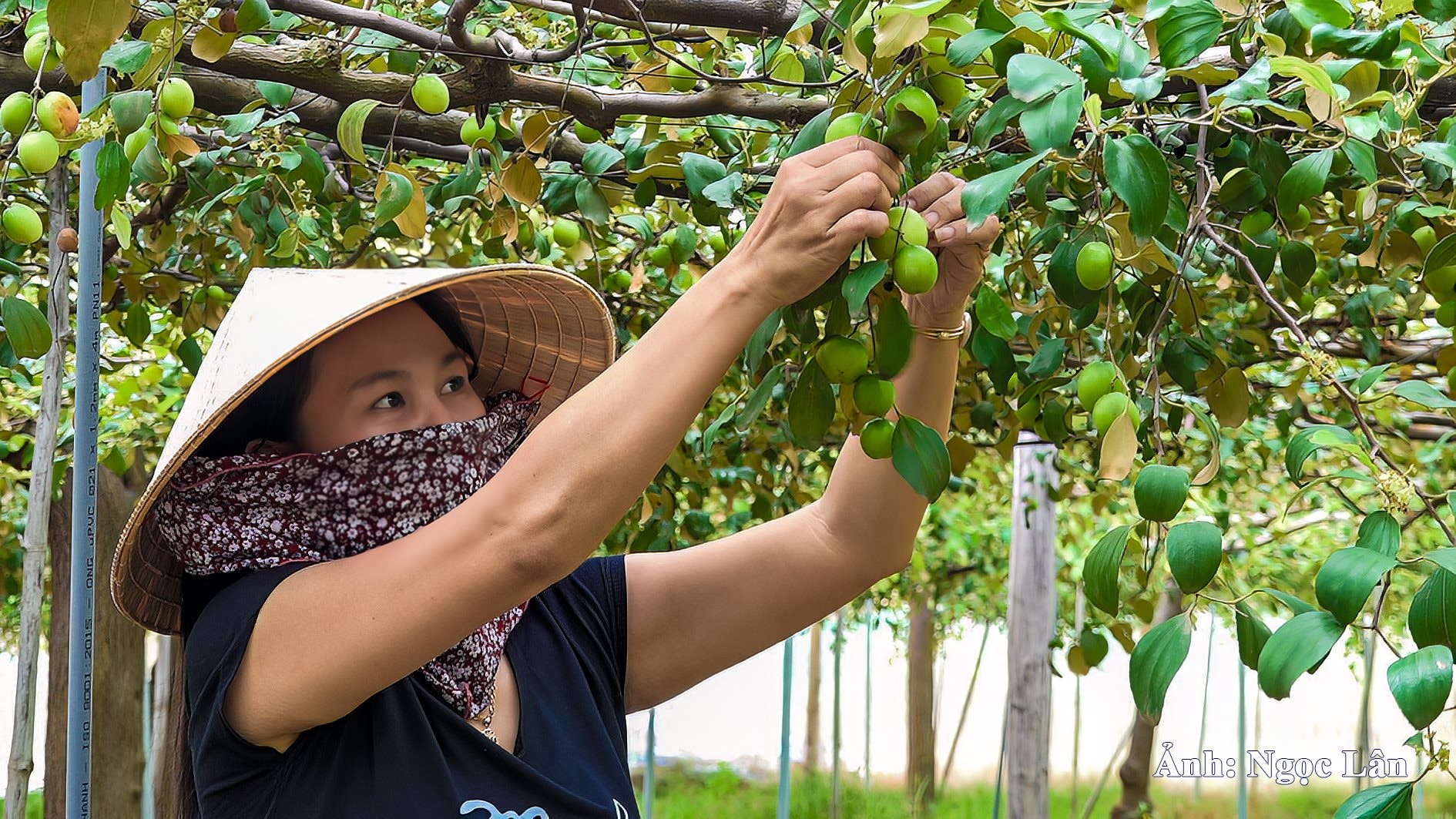
Typical crops of Tuy Phong. Photo: N.Lan.
Opening the way for clean production, linking the chain to the market
Tuy Phong has restructured production to suit natural conditions and market demand, forming distinct specialized areas: rice, dragon fruit, apple, grape, aquaculture, salt, shrimp breeding... Agricultural production has shifted in the right direction, key crops such as apple, grape, dragon fruit have developed stably.
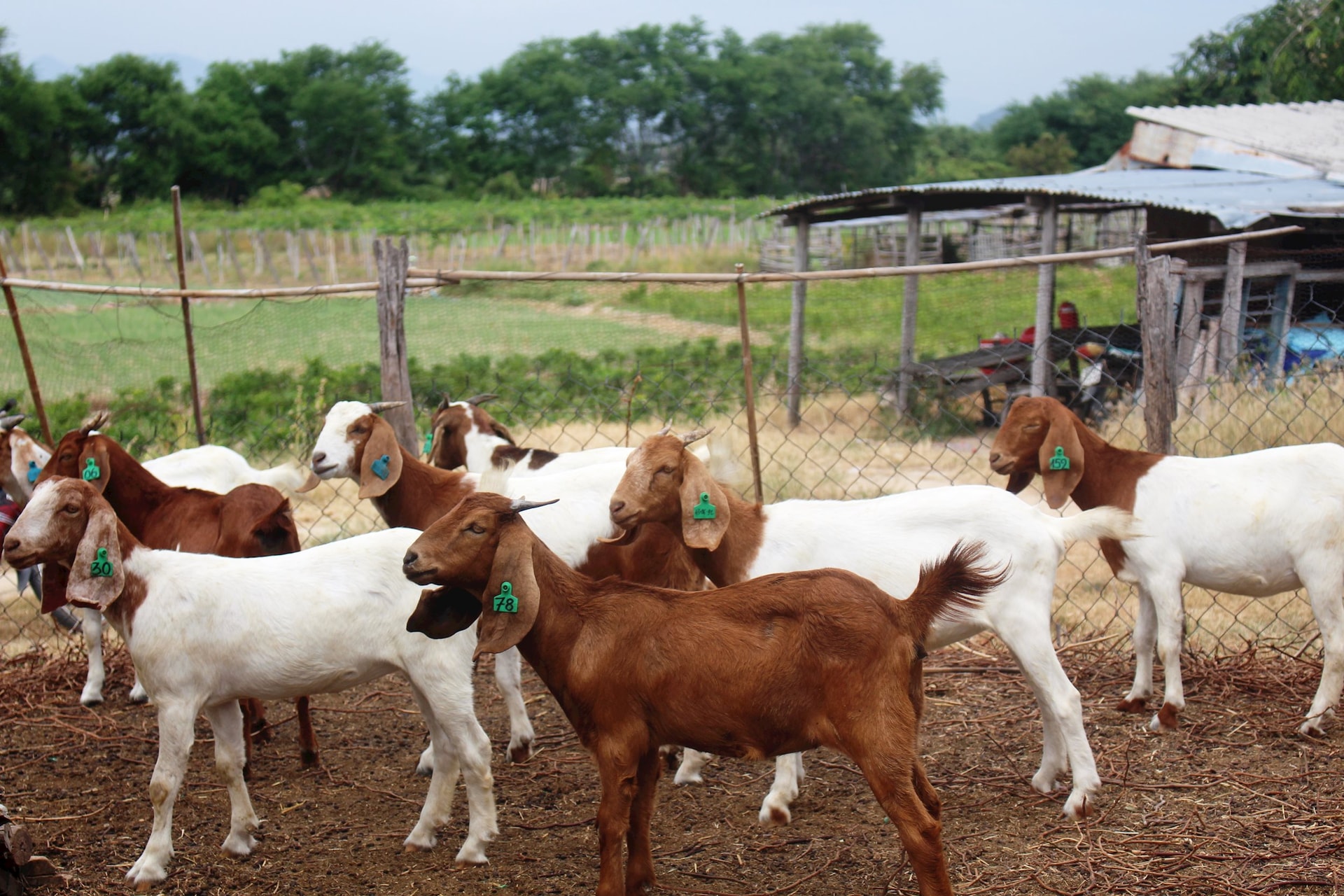
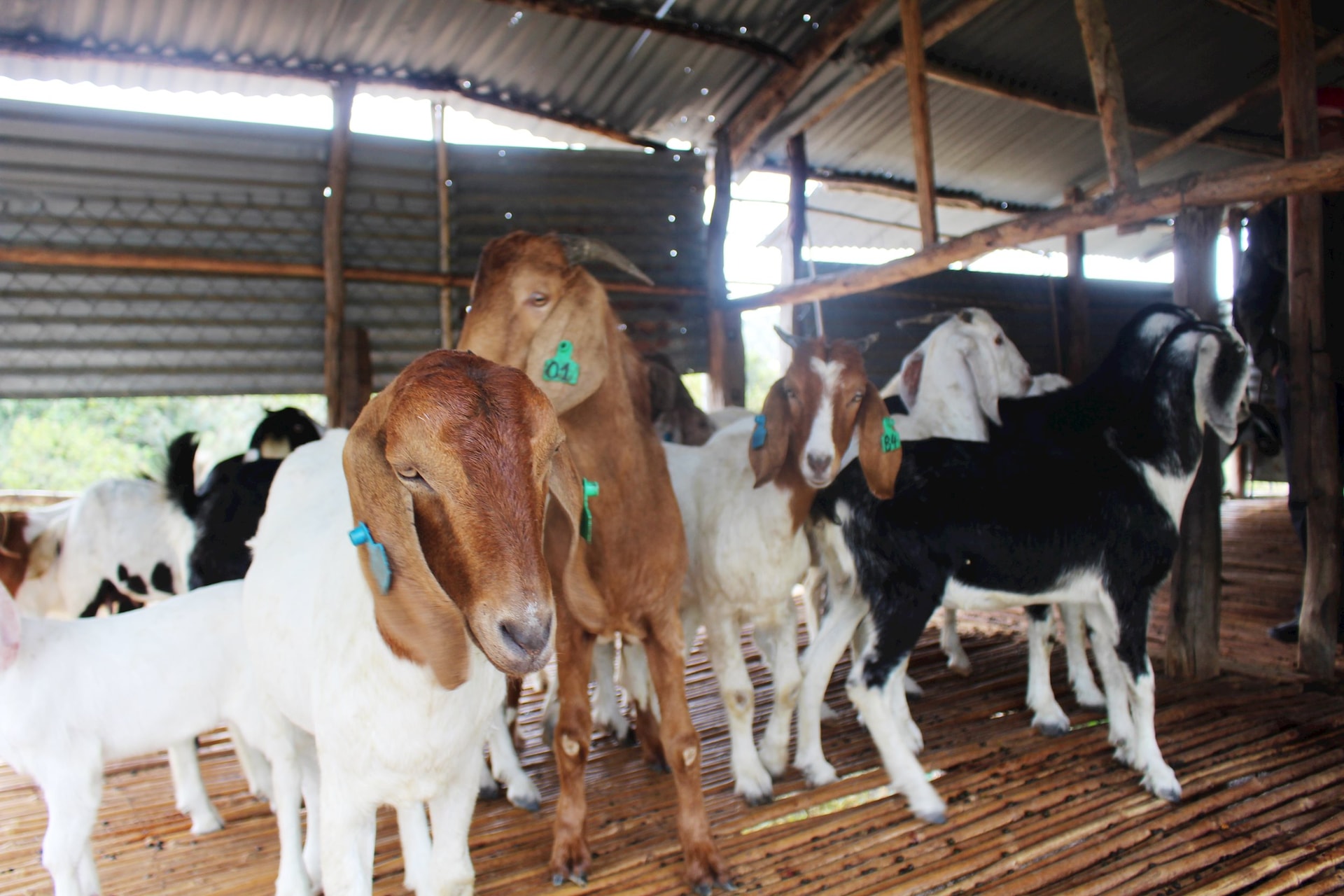
Raising imported goats in Phong Phu commune. (Photo: T. Duyen)
Key crops such as apples and grapes are constantly expanding and developing. In particular, the area of apples grown in greenhouses accounts for more than 92%, helping the yield reach 42 - 45 tons/ha/year. Phong Phu apples have a brand and geographical indication. The NH01-152 grape variety (Hong Nhat) is gradually replacing traditional red grapes with 86.5% of the district's area, of which 11.8 hectares are grown in greenhouses. The production model according to VietGAP standards, with growing area codes, is being replicated. Currently, the area of VietGAP dragon fruit is more than 116 hectares. The district has granted growing area codes to 16.41 hectares of various crops (grapes, apples, melons), creating favorable conditions for connecting consumption, especially for export. In addition, maintaining medicinal plants such as gum tragacanth, ginseng, roselle, etc. The level of mechanization is increasingly high, with 100% of rice from land preparation to harvesting; Other crops reach 60 - 90%.
The application of technology is also clearly demonstrated through new production models such as: introducing new rice varieties, intensive cultivation of grapes and apple trees in the direction of Gap; effective models of growing coconut, jackfruit, and custard apple; crossbreeding and applying high-quality livestock breeds (Brahman cows, 3B cows, Sind cows, Australian goats, Canadian sheep). Notably, from 2021 to present, the district has implemented 1 project and 70 production development models with a total cost of more than 12.35 billion VND. A typical example is the SRI improved rice model in Phan Dung commune, which helps reduce investment costs, increase productivity and protect the environment. According to the assessment, the production models are effective, most of which have been replicated and become a movement in production in the district. Thereby, reducing costs, increasing economic value, contributing to bringing the district's agriculture closer to a large-scale commodity production model, linked to the consumer market.
Tuy Phong is developing agriculture in the direction of linking value chains and tourism. Many agricultural products are certified with 3-4 star OCOP such as fresh apples, dried apples Phong Phu; Hong Nhat grapes from Le My garden; Pitayana dragon fruit wine; cinnamon sausage, Binh Thanh pork sausage; Hoa Minh and Phu Lac melons; Hoang Gia fish sauce... not only affirming the quality but also contributing to building local brands.
Since the establishment of Binh Dien Agricultural Cooperative in 1979, the district now has 13 cooperatives and 18 agricultural cooperative groups operating stably, gradually following clean production standards and linking product consumption. The existing links in production and consumption of key agricultural products in the district are maintained. The model of linking tourism - agriculture in the vineyards of Phuoc The commune is attracting tourists to visit, experience and buy products on the spot. This is a potential direction, opening the door for local products to access a larger market...
Source: https://baobinhthuan.com.vn/ky-niem-50-nam-ngay-giai-phong-huyen-tuy-phong-17-4-1975-17-4-2025-thuy-loi-thuc-day-phat-trien-nong-nghiep-hien-dai-129332.html


![[Photo] Funeral of former President Tran Duc Luong in Quang Ngai](https://vphoto.vietnam.vn/thumb/1200x675/vietnam/resource/IMAGE/2025/5/25/ccf19a3d8ea7450bb9afe81731b80995)

![[Photo] Ea Yieng commune settlement project abandoned](https://vphoto.vietnam.vn/thumb/1200x675/vietnam/resource/IMAGE/2025/5/25/57a8177361c24ee9885b5de1b9990b0e)
![[Photo] French President Emmanuel Macron and his wife begin state visit to Vietnam](https://vphoto.vietnam.vn/thumb/1200x675/vietnam/resource/IMAGE/2025/5/25/03b59c7613144a35ba0f241ded642a59)
![[PHOTO] Hanoi fences off demolition of "Shark Jaws" building](https://vphoto.vietnam.vn/thumb/1200x675/vietnam/resource/IMAGE/2025/5/25/1b42fe53b9574eb88f9eafd9642b5b45)
![[Photo] Welcoming ceremony for Prime Minister Pham Minh Chinh and his wife on an official visit to Malaysia](https://vphoto.vietnam.vn/thumb/1200x675/vietnam/resource/IMAGE/2025/5/25/dc30203c3ae24da3990266ec3b29bb2d)
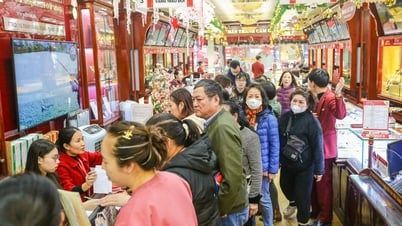




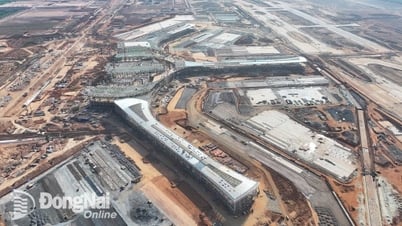

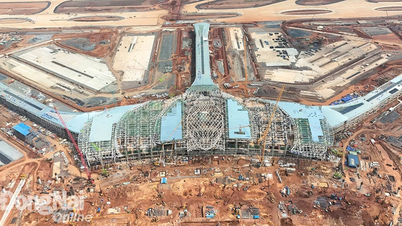






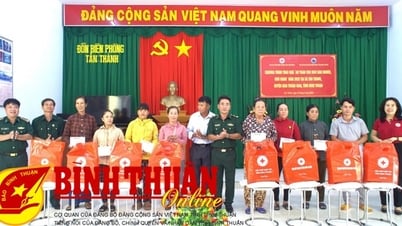

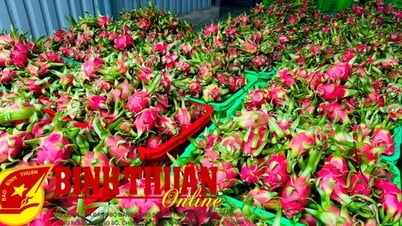


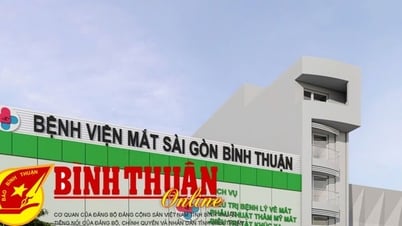

































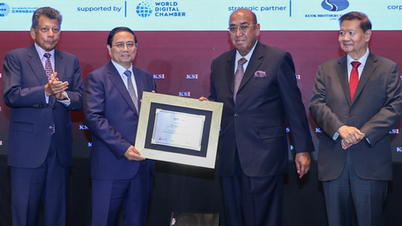

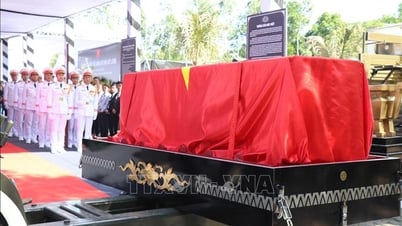











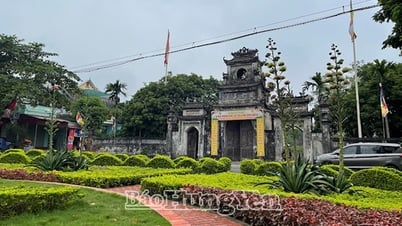

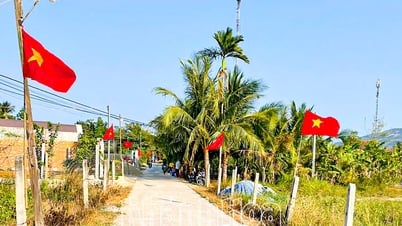













Comment (0)